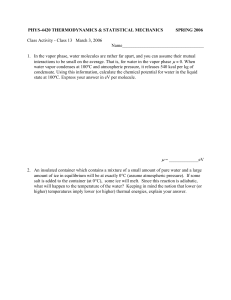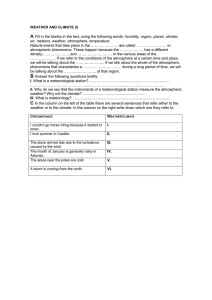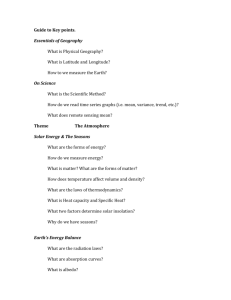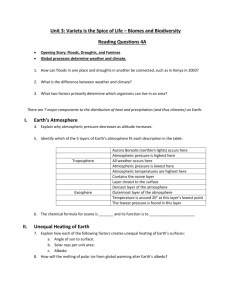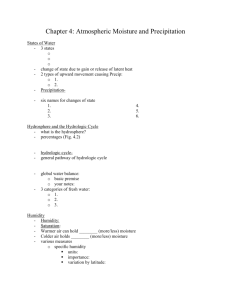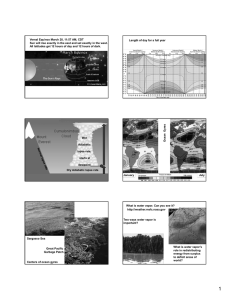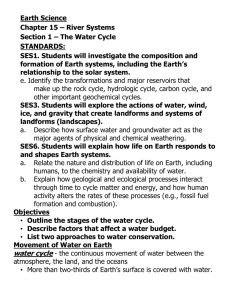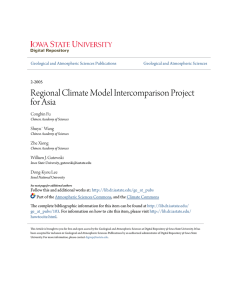Review questions for Exam 2, Tuesday, March 25, also study... In class review session on Thursday, March 20
advertisement
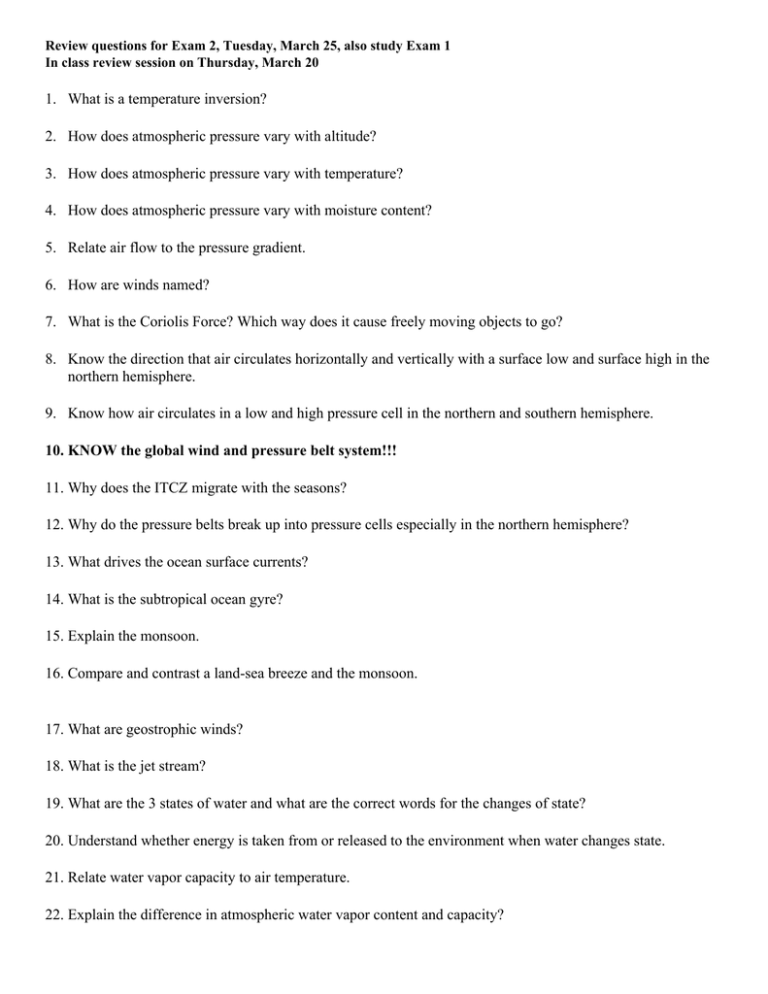
Review questions for Exam 2, Tuesday, March 25, also study Exam 1 In class review session on Thursday, March 20 1. What is a temperature inversion? 2. How does atmospheric pressure vary with altitude? 3. How does atmospheric pressure vary with temperature? 4. How does atmospheric pressure vary with moisture content? 5. Relate air flow to the pressure gradient. 6. How are winds named? 7. What is the Coriolis Force? Which way does it cause freely moving objects to go? 8. Know the direction that air circulates horizontally and vertically with a surface low and surface high in the northern hemisphere. 9. Know how air circulates in a low and high pressure cell in the northern and southern hemisphere. 10. KNOW the global wind and pressure belt system!!! 11. Why does the ITCZ migrate with the seasons? 12. Why do the pressure belts break up into pressure cells especially in the northern hemisphere? 13. What drives the ocean surface currents? 14. What is the subtropical ocean gyre? 15. Explain the monsoon. 16. Compare and contrast a land-sea breeze and the monsoon. 17. What are geostrophic winds? 18. What is the jet stream? 19. What are the 3 states of water and what are the correct words for the changes of state? 20. Understand whether energy is taken from or released to the environment when water changes state. 21. Relate water vapor capacity to air temperature. 22. Explain the difference in atmospheric water vapor content and capacity? 23. Explain two ways that atmospheric water vapor is important. THINK. This is not in the notes. 24. What is relative humidity? 25. Explain the difference in evaporation, transpiration, evapotranspiration, and potential evapotranspiration. 26. What factors affect evapotranspiration? 27. What is the dewpoint? 28. What factors affect condensation? 29. Be able to identify basic cloud types. 30. What two types of fog are most common in Mobile? THINK. Only 2 of the 4 types are common here. 31. Explain the difference in the normal (environmental) lapse rate, the dry adiabatic lapse rate, and the wet (saturated) adiabatic lapse rate. 32. What are five types of precipitation? 33. Explain the 4 types of lifting and give an example of where each is likely to occur? 34. Explain the latitudinal variation in precipitation in terms of temperature, pressure, moisture availability, and lifting mechanisms. Be able to include precipitation on the global wind and pressure diagram 35. What is an air mass? 36. What are the full name and characteristics of mT, mP, cP, cA, and cT air masses. 37. Which air masses most commonly meet in the central USA? 38. What is a front? 39. Contrast a cold front and a warm front. 40. Be able to explain a basic weather map. (Know the symbols for the 4 types of fronts) 41. Why does the USA have more tornadoes than any other country on earth? 42. In what season are bad tornadoes most likely to occur, why? 43. Where are hurricanes most likely to form? What conditions do they need? 44. What factors affect the severity of a hurricane strike? 45. Which quadrant of a hurricane is the most deadly?
